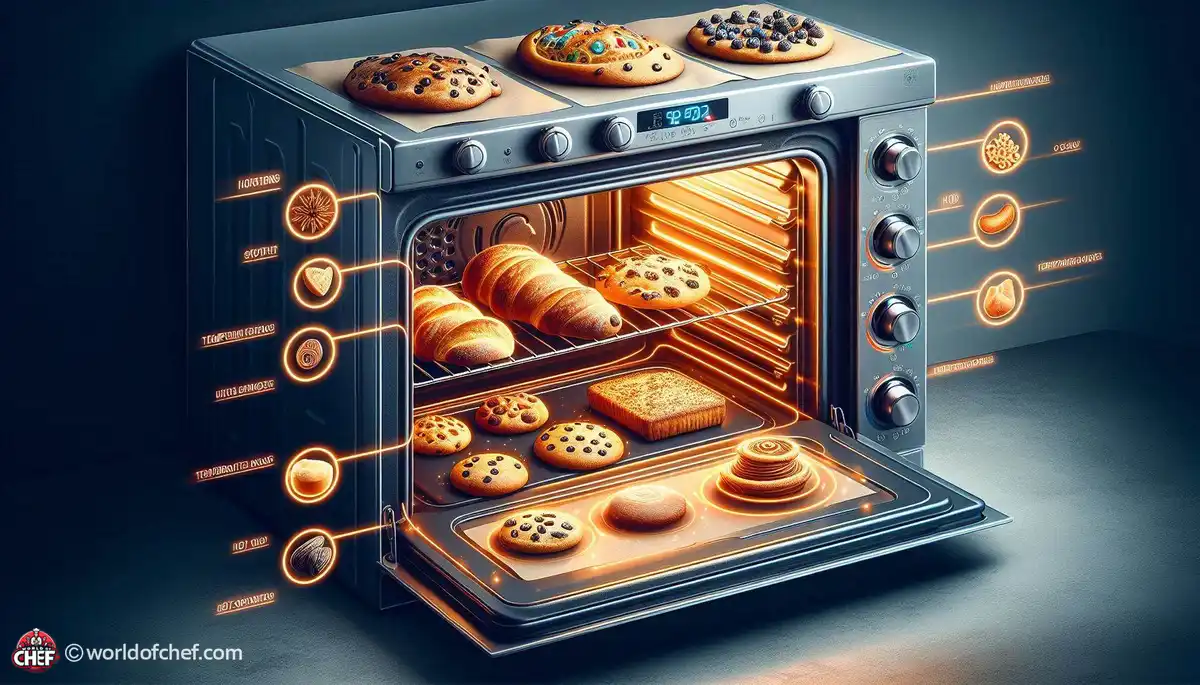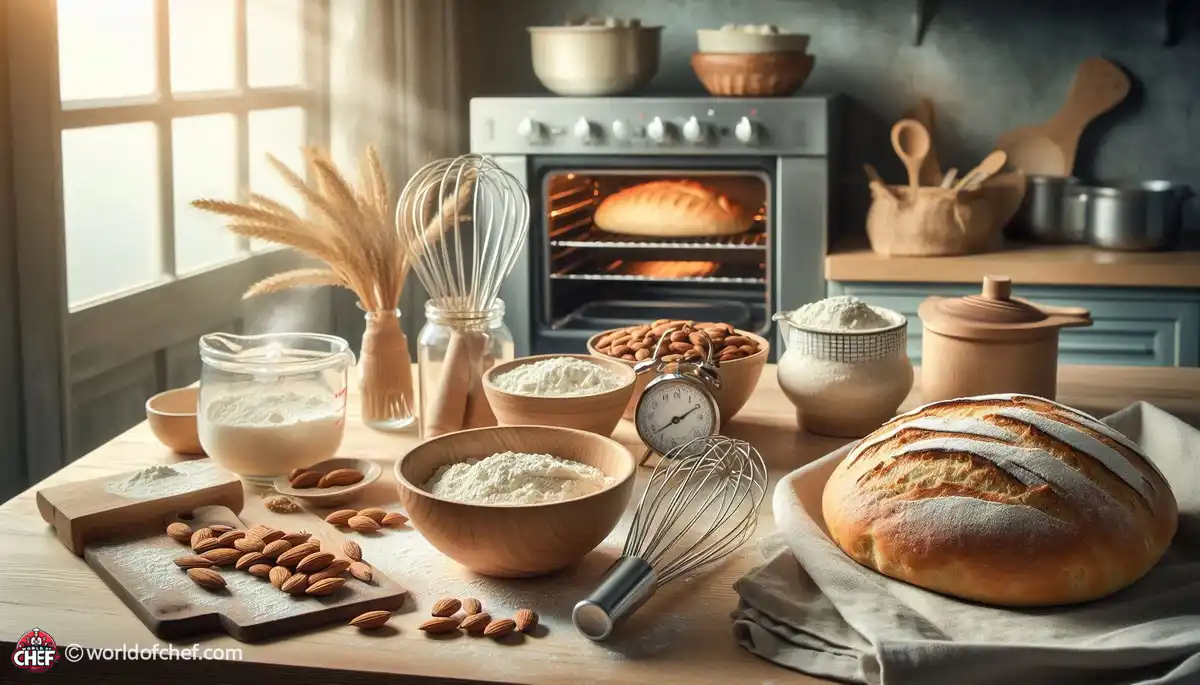
Understanding Oven Hot Spots and How to Bake Around Them
Russell Comeaux - Mar 30, 2025 - 13 min read


Baking is really a science, and knowing what happens in your oven, especially its temperature settings, will help you eventually get perfect results. More often than not, when things go wrong, it usually comes back to temperature problems. Any oven that does not heat in the right way can then turn your culinary dreams into a baking nightmare. The post will look at a number of common oven temperature problems and how to trouble shoot them effectively.
Every oven is unique, and one has to learn the differences between ovens to be able to succeed. Most ovens have a number of functions-bake, broil, convection, and so on. Each will cook differently. Bake usually heats from both top and bottom elements, while the broil heats from above. All these functions will greatly change the way food is cooked.
Temperatures on your oven are normally measured in degrees Fahrenheit, but most recipes talk about temperatures in Celsius. It would be a bad idea to not convert it correctly to avoid confusion. An oven thermometer can actually be your best friend here. You will be able to check whether the temperature that you have set matches with the real heat inside of the oven. Most of the home cooks do not know that the internal temperature of an oven can sometimes vary so much that, when they are baking, all their products end up overbaked or underbaked.
Do not forget to preheat the oven. This makes it such that the oven is already at its temperature when you put your dish in. Failure to preheat may make your cake have doughy centers and burnt edges. The general recommendation would be at least 15-20 minutes of preheating depending on your oven's specifications.
Most modern ovens are pre-calibrated, but their accuracy may fade with time. Calibration may be affected by age, frequent use, and even physical damage. The temperature dial or digital display may not accurately reflect the internal temperature, which may lead to disaster in the baking process.
To check if your oven is accurate, you can place an oven thermometer inside and set it to a specific temperature, say 350°F. Compare the reading of the thermometer after about 15-20 minutes with the setting. If there is a huge difference, then you may need to recalibrate it. Some ovens can be recalibrated manually, while others have to be serviced professionally.
Understanding how your oven works and how to calibrate it can make a difference in your baking. Believe it or not, getting familiar with your oven, which is time-consuming, eventually pays off in the type of baked goods you present.
Perhaps the most disappointing result of a faulty oven temperature is that baking turns out uneven. Sometimes you may see burnt cookie tops and doughy bottoms. This mostly happens due to hot spots in your oven. The heat coming out of ovens isn't always even; certain parts tend to be hotter than others.
You might just find some hot spots if you bake a batch of cookies on one tray in the oven. Position that tray on the top shelf, then the middle shelf, and then finally the bottom shelf, noticing at the end what has been accomplished. You can often start to see areas that are cooking at much greater rates for certain portions of the baking. If that keeps happening in every batch you bake, it is probably a good idea to cut your baking time in half so that your pans rotate from one position to another during that baking time.
The most common reason for baking unevenly is overcrowding. If you're trying to bake several trays at once, it blocks airflow and causes uneven temperatures. Always ensure enough space between trays and never overload the oven. It is this small adjustment that makes all the difference between evenly baked goods.
If your cakes get a good exterior and have remained uncooked in the interior, this might result in oven temperature. For example, it happens that the oven gets hotter. This usually is reduced with lowering about 25 degrees as part of practice in handling cases that involve the observation of the said phenomenon. With the temperature set like that, cooking becomes perfect while at the same time keeping it textured.
On the other hand, if your baked goods are taking longer than the recipe states and are still not cooked, then your oven is probably running cooler than you think. Again, an oven thermometer is the way to check if the actual temperature is matching what the dial setting says it is. If it is not, then you probably need to have your oven recalibrated to bake with more accuracy.
Of course, baking times vary with every recipe. Pay attention to other visual signs, like the cake springs back when you touch it, or the bread is golden brown. Learn these visual signs to avoid using the timer too often, because at times you might end up with a burnt dish or an overcooked one since the oven temperature is not exactly accurate.
Another sign of temperature issues is that the baking time becomes irregular. You might follow a recipe that indicates a specific baking time, and your dish ends up being either overcooked or undercooked. This usually happens when the internal temperature of the oven does not correspond to the set temperature and therefore leads to inappropriate timing.
This task would be best to check baked goods periodically rather than setting your timer and then stepping away. Look through the oven door; there are sometimes very good visual cues. Your item should be considered done when its edges turn brown, and the top sets: it's also a good time to use a toothpick or skewer test for doneness.
If you often struggle with unbalanced baking times, you ought to keep a baking diary. This can be food type, the temperature preset, and how long till it was done. Ultimately, you will have reference points to use for other bakes that may well avoid the same mistakes.
The first step in troubleshooting oven temperature issues is an investment in a good, reliable oven thermometer. You can easily tell if the oven is heating to temperature with this simple tool: place the thermometer inside the oven and then check after it has preheated fully.
Remember that most home ovens vary by some 25 degrees Fahrenheit so when you go to place a thermometer inside your oven it's okay if there are differences but if they look large then you probably must calibrate your oven and even in some instances may need servicing, so save yourself any future disasters related to baking.
After you have determined that your oven is accurate, then you can begin to alter your baking habits. For instance, if your oven is running hot, then you will reduce the temperatures used in your recipes. If it runs cold, then you will have to raise the temperatures. It saves you a lot of heartache and wasted ingredients this way.
Sometimes, external factors can actually be the problem itself. For example, take the positioning. Is your oven close to your stovetop or fridge? If so, that could well cause your oven to retain its heat not as good - which leads to a lousy temperature mixing.
Ensure proper seals on the door. In case you have gaps here, heat will escape, and this is one serious problem with using a convection oven since it will need consistent airflow to distribute heat uniformly. Should you suspect that your door seal is faulty you might consider changing it.
Finally, look at your bakeware. The darker the pan, the more it will absorb, causing it to bake the baked good too much on the bottom. Glass is not as bad but may produce a very uneven baked product. Try your type of bakeware and what kind of results you may have. This slight variation can make a huge difference with how the final baked product looks.
If you have tried the above steps and still face temperature inconsistency, then it is time to consider mechanical issues. This can range from a simple thermostat fault to a major issue of broken heating elements. A faulty thermostat causes erratic fluctuations in temperatures, while worn-out heating elements might not be able to produce sufficient heat.
Refer to the oven's manual for instructions on how to check the thermostat. Check for any signs of damage or wear. If you feel uncomfortable trying to troubleshoot this issue, contact a professional technician.
Another possible fault could be in the fan of the oven, especially in convection ovens. If the fan does not work well, there is an unbalanced heat distribution. Pay attention if the oven is making some kind of noise; it could be that the fan is malfunctioning.
Regular calibration checking can prevent most temperature problems with your oven. The check should be done periodically, every few months or whenever you suspect a difference in your baked products. With an oven thermometer, you are assured that your oven is working as it should.
If you find that the set temperature varies significantly with the current temperature, you should calibrate. Most ovens have some degree of calibration adjustment, and these are usually made in the oven settings or a manual. You want your oven to bake uniformly so that you can bake like you expect.
Another important consideration is self-cleaning, which does indeed effect calibration. After a self-cleaning cycle, it's a good idea to test the temperature. Sometimes high heat will adjust how certain areas of your oven will function. How to Use Your Oven Properly
The way you use your oven can be very consequential to its temperature stability. Ensure that the oven has been preheated correctly to bake. Try not to open the door of the oven while it is baking; this allows heat to escape and may lower the temperature at one time.
Position the food to allow for a good amount of air circulating between each piece as it is placed in the oven. This prevents undercooked and overcooked foods that may be caused by poor air circulation in the oven. Use a multiple rack setup to assure that items with similar Flavor Profiles are together. End.
The other consideration is the size and material of your bakeware. Thicker pans may help retain heat, whereas lightweight pans may heat too quickly. Pay attention to the recommendations in your recipes concerning what type of bakeware to use for the best results.
A clean oven contributes to even temperatures. The residue and grease buildup in the oven would affect how your oven actually works-hot spots and uneven baking could be involved. Clean spills from time to time, and make sure the oven door is kept clean so the oven retains the heat correctly.
Clean your oven vents and fans from blockages. The buildup of dust or grease reduces the airflow that may create inconsistent temperatures. Cleaning may avoid such problems, and thus, your oven will run more efficiently.
Lastly, take a glance at your oven's manual for any specified maintenance procedure. There is a probability that the manufacturers have varied requirements or special needs for the models, or perhaps a certain feature has to be checked and possibly cleaned in some cases. If you follow these instructions, your oven will probably last long and perform even better.
Sometimes, you might try everything and the temperature problems still do not go away. If your oven won't stabilize around your chosen temperature or has other odd noises, it's high time to call in professionals. Severe mechanical breakdowns usually require professional skills and tools for correct and proper diagnosis and repair.
Never let signs like uneven baking between different dishes, persistent burning and undercooking, and failure to preheat in time. Chances are that these happenings may be symptoms of deeper problems in your oven that might lead to larger malfunctions if unchecked. It could even pose a safety hazard.
A professional technician can check the entire appliance and identify problems not so apparent. They will check the heating elements, thermostats, electronic controls, and other parts to ensure that everything works correctly.
Before you contact a professional, it is good to consider the cost of repair. Repairing an oven can vary widely depending on the type of issue and the age of the appliance. If your oven is relatively new and under warranty, repairs may be covered.
However, if your oven is old, you might find it cheaper to purchase a new one than spending a lot of money to repair it. Compare the cost of repairs with the useful life of the oven. If you find many problems, it might pay to just replace the appliance.
Get any breakdown estimate so you may not be blindsided by extra charges that would escalate the cost you may pay to get things done, and check good reviews for local service providers that could ensure you get help.
You probably should upgrade if your oven seems to always get in your way. With modern technology, many modern ovens are equipped with cutting-edge technology that ensures better temperature control and monitoring. In fact, some smart technologies can connect to your smartphone, sending alerts and adjusting even when you are far from the kitchen.
High-quality ovens save one a lot of frustration in the long run. The best would be to look for oven models with good reviews, especially those that focus on the aspect of temperature accuracy and consistency. A reliable oven improves results in baking and makes cooking less stressful.
Thus, with knowledge of oven temperature problems and how to cure them, your game will reach the highest levels in baking. There is nothing as such as problems right from diagnosis to maintaining a healthy oven. All that is sure to let you come out with bakery products perfectly every time, given patience along with knowledge. Happy Baking!

Russell Comeaux - Mar 30, 2025 - 13 min read

Alexis Larose - Mar 25, 2025 - 15 min read

Hailey Morrill - Mar 21, 2025 - 18 min read

Bobby McKelvey - Mar 18, 2025 - 12 min read